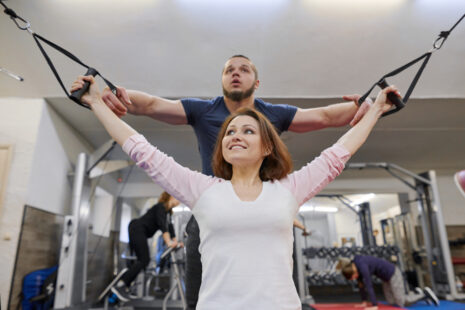Gymnastics, particularly high-level gymnastics involving intense training and repetitive movements, can potentially exert pressure on the spine over time. While gymnastics can provide numerous physical benefits, including strength, flexibility, and coordination, it’s essential to practice proper technique and training methods to minimize the risk of spinal compression and other injuries.
Several factors can contribute to spinal compression in gymnastics…
- Repetitive Movements – Certain gymnastics movements, such as tumbling, vaulting, and twisting, involve repetitive impacts on the spine. Over time, these repetitive movements can lead to spinal compression if not performed with proper technique and control.
- High-Impact Landings – Gymnasts often perform high-flying acrobatic maneuvers that involve landing with force on the feet or the hands. Improper landings or excessive force can transmit shock through the spine, potentially leading to compression injuries.
- Overtraining – Overtraining without adequate rest and recovery can increase the risk of injury, including spinal compression. Continuous stress on the spine without sufficient recovery time can lead to wear and tear on the spinal structures.
- Improper Technique – Poor technique or form during gymnastics maneuvers can place excessive strain on the spine, increasing the risk of compression injuries. Proper coaching and supervision are essential to ensure gymnasts learn and execute movements safely.
- Growth and Development – Young gymnasts who are still growing may be more susceptible to spinal compression injuries due to the changes happening in their bodies. It’s crucial for coaches and parents to monitor young gymnasts closely and ensure they are training appropriately for their age and level of development.
To minimize the risk of spinal compression and other spinal injuries in gymnastics, it’s important to…
- Focus on proper technique and form during training and routines.
- Incorporate strength and conditioning exercises to support the spine and surrounding musculature.
- Implement proper warm-up and cool-down routines to prepare the body for activity and aid in recovery.
- Listen to the body and avoid pushing through pain or discomfort.
- Ensure adequate rest and recovery between training sessions to prevent overuse injuries.
By prioritizing safety and proper training techniques, gymnasts can enjoy the benefits of the sport while reducing the risk of spinal compression and other injuries. Regular communication between coaches, gymnasts, and healthcare professionals is essential for identifying and addressing any potential issues early on.




